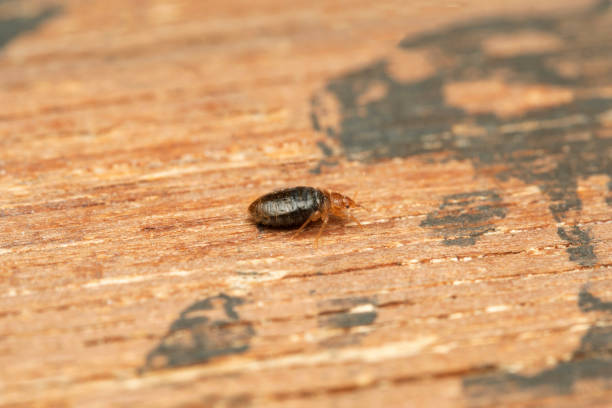Bed bugs, tiny nocturnal pests that feed on human blood, have been a source of fascination and fear for centuries. These insects have made a notorious comeback in recent decades, infesting homes, hotels, and public spaces.
Along with their resurgence, a plethora of myths and misconceptions about bed bugs and their removal have also spread. In this article, we will debunk these myths and provide accurate information about bed bugs and effective bed bugs removal methods.
Myth 1: Bed Bugs Only Infest Dirty Environments
One of the most prevalent myths about bed bugs is that they only infest dirty or unsanitary environments. However, this couldn’t be further from the truth. Bed bugs are opportunistic insects that are attracted to warmth, carbon dioxide, and human blood, not filth. They can infest any environment, regardless of its cleanliness. Clean homes, luxury hotels, and even public transportation can fall victim to bed bug infestations.
Myth 2: Bed Bugs Are Too Small to See
While it’s true that bed bugs are relatively small insects, with adults measuring around 4 to 5 mm in length, they are not invisible to the naked eye. In fact, adult bed bugs are easily visible, especially when they have recently been fed, and their bodies are engorged with blood, making them appear reddish-brown in color. Bed bug eggs, nymphs (young bed bugs), and excrement can also be seen with proper inspection.
Myth 3: Bed Bugs Transmit Diseases
Unlike other blood-feeding insects like mosquitoes and ticks, bed bugs are not known to transmit diseases to humans through their bites. While their bites can cause itching, irritation, and sometimes allergic reactions, the primary health concern with bed bugs is the psychological distress and sleep disruption they can cause due to their persistent biting.
Myth 4: Bed Bugs Only Live in Beds
Despite their name, bed bugs are not limited to infesting beds. While they are commonly found in and around mattresses, box springs, and bed frames, they can also hide in various other locations. These include cracks and crevices in walls, furniture, baseboards, electrical outlets, and even luggage. Bed bugs are skilled hitchhikers, so they can be transported from one place to another through personal belongings.
Myth 5: Bed Bugs Are Nocturnal Exclusively
While bed bugs are primarily active at night when their human hosts are asleep, they can adjust their feeding patterns if necessary. If they sense a readily available food source, such as a sleeping person during the daytime, they will not hesitate to feed. Therefore, although they are more active at night, bed bugs are not strictly nocturnal creatures.
Myth 6: DIY Methods Are Sufficient for Removal
The internet is flooded with DIY methods for bed bug removal, ranging from various sprays and essential oils to vacuuming and steam cleaning. However, many of these methods are ineffective in eradicating a well-established bed bug infestation. Bed bugs are resilient pests that can hide in hard-to-reach areas, and they have developed resistance to some pesticides. Professional pest control is often necessary to fully eliminate an infestation.
Myth 7: Sticky Traps Can Only Be Used Indoors
Some people believe that sticky traps are exclusively meant for indoor use. In reality, there are outdoor-specific sticky traps designed to capture flying insects that can be problematic in gardens, on patios, and around outdoor lighting. However, not all sticky traps are suitable for outdoor use due to weather and other environmental factors.
Myth 8: Bed Bug Infestations Are Always Visible
Bed bugs are adept at hiding in cracks and crevices, making it difficult to detect an infestation until it becomes severe. Some people may not exhibit any noticeable signs of bed bug bites, while others may mistake the bites for other skin conditions. It’s possible to have a significant infestation without obvious signs, so regular inspections are essential, especially after traveling or purchasing used furniture.
Myth 9: Bed Bugs Can Be Starved to Death
Bed bugs are resilient and can survive for several months without feeding. Some people may attempt to starve them out by avoiding the infested area for an extended period. However, this approach is unlikely to be successful, as bed bugs can endure long periods without feeding and will eventually become active again once they sense a host nearby.
Myth 10: Removing Infested Furniture Solves the Problem
While removing infested furniture might seem like a straightforward solution, it’s often not enough to eliminate a bed bug infestation entirely. Bed bugs can spread to other parts of the home or even to a new location through clothing, bedding, and other belongings. Simply discarding furniture without proper treatment can lead to bugs infesting new areas.
Effective Bed Bug Removal Strategies
- Use Eco-friendly Sticky Traps: Consider using eco-friendly sticky traps as part of your bed bug removal strategy. These traps utilize non-toxic and natural adhesive materials, making them safer for both humans and pets while capturing crawling bed bugs.
- Integrated Pest Management (IPM): IPM is an approach that combines various strategies to manage pest populations. It involves inspection, identification, sanitation, and targeted pesticide application. IPM focuses on long-term prevention and control rather than just eradicating existing infestations.
- Thorough Cleaning: Regular cleaning and decluttering can reduce hiding spots for bed bugs. Washing bedding, clothing, and curtains in hot water and drying them on high heat can help kill bed bugs at all life stages.
- Vacuuming: Vacuuming can help reduce the number of bed bugs, especially adults, nymphs, and eggs. However, vacuuming alone is unlikely to completely eliminate an infestation.
- Heat Treatment: Bed bugs are sensitive to high temperatures. Professional heat treatments can effectively kill bed bugs and their eggs by raising the temperature of infested areas to levels that are lethal to the insects.
- Education and Prevention: Knowing the signs of bed bug infestations and taking preventive measures, such as inspecting hotel rooms while traveling and avoiding used furniture without proper inspection, can help you avoid infestations in the first place.
Conclusion
Bed bugs are elusive pests that have inspired numerous myths and misconceptions. It’s important to separate fact from fiction in order to effectively prevent and manage infestations. Professional pest control supply stores, integrated pest management, and a combination of strategies tailored to the specific situation are the best approaches for dealing with bed bugs. Regular vigilance and education are key to keeping these pests at bay and ensuring a comfortable and pest-free living environment.




